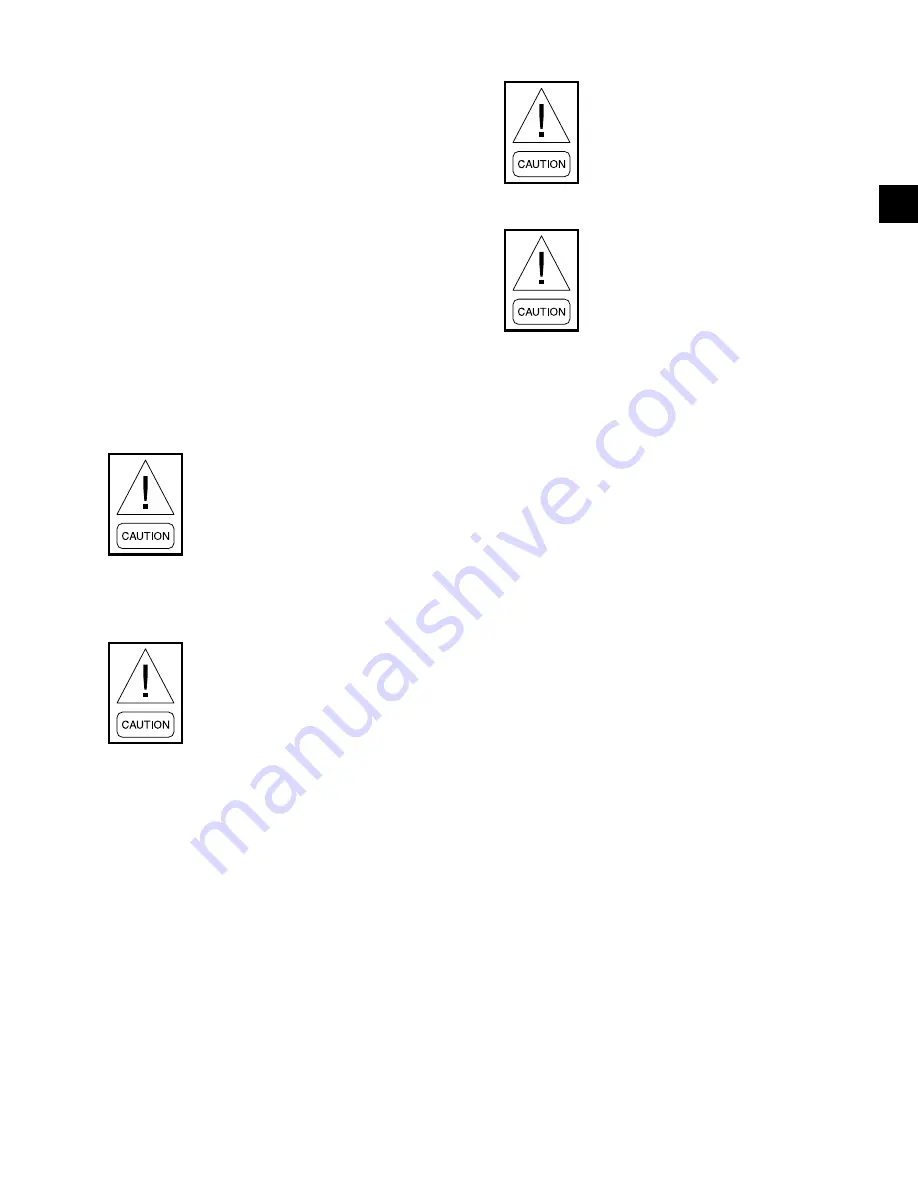
JOHNSON CONTROLS
53
SECTION 3 - HANDLING, STORAGE, INSTALLATION AND REASSEMBLY
FORM 201.30-ICOM1 (519)
ISSUE DATE: 05/22/2019
3
The chiller must not be exposed to flushing velocities
or debris released during flushing. Install a suitably
sized bypass and valve arrangement to allow flushing
of the piping system. The bypass can be used during
maintenance to isolate the heat exchanger without dis-
rupting flow to other units.
Connections
Thermometer and pressure gauge connections should
be provided on the inlet and outlet connections of each
cooler. Gauges and thermometers are not provided
with the unit, and are to be furnished by others.
Drain and air vent connections should be provided at
all low and high points in the piping to permit drainage
of the system and to vent any air in the pipes.
Stop valves may be provided (by others) in the piping
adjacent to the unit to facilitate maintenance.
Any debris left in the water piping between
the strainer and evaporator could cause
serious damage to the tubes in the chiller
and must be avoided. Be sure the piping
is clean before connecting it to the water
boxes. Keep nozzles and chilled liquid
piping capped prior to installation to make
sure construction debris is not allowed to
enter.
Make sure that the water quality in circu-
lation is adequate, without any dissolved
gases, which can cause oxidation of steel
or copper parts within the chiller.
Condenser Water Circuit
To properly operate the unit, condenser refrigerant
pressure must be maintained above evaporator pres-
sure. If operating conditions will fulfill this require-
ment, do not attempt to control condenser water tem-
perature by means of automatic valves, cycling of the
cooling tower fan, or other means. YVWA chillers are
designed to function efficiently when condenser water
is allowed to seek its own temperature level at reduced
loads, and at off-peak seasons of the year. YVWA
chillers can be operated with entering condensing wa-
ter temperature that is less than design conditions.
Operating the chiller below its minimum
ECW could result in low oil differential
shutdowns. Different methods are used
to maintain minimum ECW; however, the
most effective method is to install a three-
part bypass valve in the leaving condenser
water line.
Operating below the minimum entering
condensing water will not provide energy
savings, and will result in oil manage-
ment problems. However, if the enter-
ing water temperature can go below the
required minimum, the condenser water
temperature must be maintained equal
to, or slightly higher than the required
minimum.
Checking Piping Circuits and Venting Air
After the water piping is completed, but before any wa-
ter box insulation is applied, tighten and torque the nuts
on the liquid head flanges (to maintain between 30-60
ft-lb (41-81 Nm)). Gasket shrinkage and handling dur-
ing transit may cause nuts to loosen. If water pressure
is applied before this is done, the gaskets may be dam-
aged and must be replaced. Fill the chilled and con-
denser water circuits, operate the pumps manually and
carefully check the evaporator and condenser water
heads and piping for leaks. Repair leaks as necessary.
WATER TREATMENT
The unit performance provided in the design guide
is based on a fouling factor that is AHRI-specified.
Dirt, scale, grease and certain types of water treatment
will adversely affect the heat exchanger surfaces, and
therefore the unit's performance.
Foreign matter in the water systems can increase the
heat exchanger pressure drop, which can reduce the
flow rate and can cause potential damage to the heat
exchanger tubes.
Aerated, brackish, or salt water is not recommended
for use in the water systems. Johnson Controls recom-
mends that a water treatment specialist should be con-
sulted to determine whether the proposed water com-
position will adversely affect the evaporator materials
of carbon steel and copper. The pH value of the water
flowing through the evaporator must be kept between
7 and 8.5.
Summary of Contents for YVWA
Page 155: ...JOHNSON CONTROLS 155 NOTES...
















































